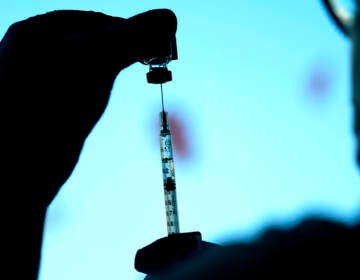COVID-19 vaccine shipments begin in historic US effort
Shipments of the Pfizer vaccine will kickstart the biggest vaccination effort in American history at a critical juncture of the pandemic that has killed 1.6 million people.

Boxes containing the Pfizer-BioNTech COVID-19 vaccine are prepared to be shipped at the Pfizer Global Supply Kalamazoo manufacturing plant in Portage, Mich., Sunday, Dec. 13, 2020. (AP Photo/Morry Gash, Pool)
The first trucks carrying a COVID-19 vaccine for widespread use in the United States pulled out of a Michigan manufacturing facility Sunday, with the shots that are critical to stopping the nation’s coronavirus outbreak destined to reach states a day later.
Shipments of the Pfizer vaccine will set in motion the biggest vaccination effort in American history at a critical juncture of the pandemic that has killed 1.6 million and sickened 71 million worldwide.
Initially, about 3 million doses were expected to be sent out, and the priority is health care workers and nursing home residents as infections, hospitalizations and deaths soar in the U.S. With numbers likely to get worse over the holidays, the vaccine is offering a bright spot in the fight against the pandemic that’s killed nearly 300,000 Americans.
Federal officials say the first shipments of Pfizer’s vaccine will be staggered, arriving in 145 distribution centers Monday, with an additional 425 sites getting shipments Tuesday, and the remaining 66 on Wednesday. The vaccine, co-developed by German partner BioNTech, is being doled out based on each state’s adult population.
Pennsylvania health care giant UPMC has chosen staff who are critical to operating its facilities as among those getting the first round of vaccinations, said Dr. Graham Snyder, who led the center’s vaccine task force.
“It’s very exciting. I will be thrilled, that moment when we administer our first dose,” Snyder said Saturday. “That will clearly be a watershed moment for us.”
Snyder said the UPMC system estimates that half its employees are willing to get the vaccine as soon as it’s offered to them.
The vaccine is heading to hospitals and other sites that can store it at extremely low temperatures — about 94 degrees below zero. Pfizer is using containers with dry ice and GPS-enabled sensors to ensure each shipment stays colder than the weather in Antarctica.
Doses should be delivered to all vaccination sites identified by states, such as local pharmacies, within three weeks, federal officials said.
The 40-hospital Oschner Health System in Louisiana and Mississippi expects to receive more than 9,000 doses in the coming days, said Dr. Sandra Kemmerly, medical director of hospital quality.
Employees approved for the first round are getting texts and emails directing them to schedule their initial injection, she said.
“I would say there’s enthusiasm,” Kemmerly said Saturday. “There’s that thought that maybe they don’t have to be so afraid to come to work if they can be vaccinated and be immune.”
The rollout will ensure there is enough vaccine to give people the two doses needed for full protection against COVID-19. That means the government is holding back 3 million doses to give those vaccinated in the first round a second shot a few weeks later.
The Food and Drug Administration authorized emergency use of the vaccine Friday, saying it is highly protective and presents no major safety issues. While U.S. regulators worked for months to emphasize the rigor and independence of their review, they faced political pressure until the final stages.
Concerns that a shot was rushed out could undermine vaccination efforts in a country with deeply ingrained skepticism about vaccines. The head of the FDA said the agency’s decision was based on science, not politics, despite a White House threat to fire him if the vaccine wasn’t approved before Saturday.
While the vaccine was determined to be safe, regulators in the U.K. are investigating several severe allergic reactions. The FDA’s instructions tell providers not give it to those with a known history of severe allergic reactions to any of its ingredients.
Another vaccine by Moderna will be reviewed by an expert panel next week and soon afterward could be allowed for public use.
WHYY is your source for fact-based, in-depth journalism and information. As a nonprofit organization, we rely on financial support from readers like you. Please give today.



![CoronavirusPandemic_1024x512[1]](https://whyy.org/wp-content/uploads/2020/03/CoronavirusPandemic_1024x5121-300x150.jpg)


